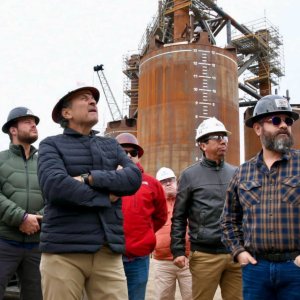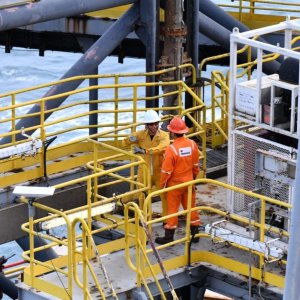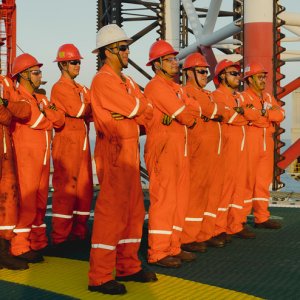
Mature Industry Seeks New Productive Life
Onshore Rounds 1.3, 2.2 and 2.3 have been the most successful in terms of blocks allocated, with 46 awarded blocks of the 49 offered by CNH. In those rounds 76 operators from 11 countries participated — 52 of them Mexican. These operators also placed, on average, five bids per block, making onshore rounds the most competitive.Onshore Rounds 1.3, 2.2 and 2.3 have been the most successful in terms of blocks allocated, with 46 awarded blocks of the 49 offered by CNH. In those rounds 76 operators from 11 countries participated — 52 of them Mexican. These operators also placed, on average, five bids per block, making onshore rounds the most competitive.
Craig Steinke, CEO of Canadian operator Renaissance Oil, emphasizes the attractiveness of Mexican fields in the company’s portfolio. “From the beginning, we did a study of where the opportunity base lies in onshore Mexico. We deduced that the greatest opportunities were in the mature fields and then in unconventionals. Among the unconventionals, we feel that the upper Jurassic shales comprise a world-class play,” he says.
According to CNH’s numbers, 60 percent of unconventional prospective resources in Mexico are located in Jurassic plays, which makes Renaissance Oil’s interest in Mexico a no-brainer. “We are convinced that the upper Jurassic shales in the Tampico-Misantla basin will be a commercial play that will rank up there with the Eagle Ford, the Permian and other world-class plays. We have done over two years of work on this, including core analysis, in-depth SCN imaging and microscopic imaging of the rock. We have enough knowledge and a track record of success to know that the Tampico-Misantla basin has all the characteristics of a world-class shale play,” Steinke explains.
ECONOMIES OF SCALE
The attractiveness of onshore Mexico can be understood given the breadth of experience local service companies have gathered while working with PEMEX. These fields also generally require lower OPEX and CAPEX to explore, develop and produce hydrocarbons. As a matter of fact, of the 50 onshore contracts allocated by CNH, 22 are for exploration while 25 are for evaluation and development and three for development.
Juan Tavara, CEO of Atlantic Oil & Gas, sees a great opportunity in the onshore blocks, where he believes companies like his can provide greater added value to operators that were awarded a block. “We are focusing on creating relationships with the winners of Round 1.3. Those companies received mature fields that are already producing and to improve operations they need to install new equipment that we can provide, or they will need to provide maintenance for equipment that is already installed.”
Aware of Mexico’s potential to develop unconventional deposits and the need to increase the country’s oil and gas production, Aldo Flores, Deputy Minister of Hydrocarbons at the Ministry of Energy, is looking forward to the results of Round 3.3. “The Burgos basin holds 50 percent more prospective resources than the Eagle Ford basin, so we see a large upside for the development of Burgos and the interest we have seen so far is high. The nine blocks in the upcoming licensing round on their own hold more resources than anything we have auctioned so far onshore.”
Considering the technologies that have been developed to explore and produce unconventional resources in the Eagle Ford basin, companies that have a strong presence there are excited about the opportunities rising in Mexico, says Christian Rodríguez, Director Mexico of Core Laboratories. “Formations or basin geology does not abruptly finish at a country’s border, meaning that we can bring all the expertise we have gathered with those operations into the northern region of Mexico and the Mexican side of the Gulf of Mexico,” he says.
STREAMLINING REGULATION
While the potential is clearly visible, Mexican regulators still have much to learn from international best practices while implementing regulations that can underpin profitability. “Commercially, to launch an aggressive development of a shale play, the right fiscal terms are necessary, and these must be different for unconventionals and conventional resources,” says Steinke. “Renaissance has been very much involved on behalf of AMEXHI in talking with the Ministry of Energy and the Ministry of Finance regarding the design of the right fiscal terms. Beyond that, the right contract terms are required. A contract for unconventional resources needs to be different from a regular contract if it is to facilitate a proper and aggressive development of shale.”
But Steinke also warns that a proper regulatory framework that ensures the highest quality in terms of environment and safety is critical. “Another issue is that many wells must be drilled for unconventional resources as they are tight reservoirs. Therefore, a streamlined drilling permitting process is important as well as sensible water regulations. We understand this is a new oil and gas regime and the authorities are trying to do things right but the current permitting process is designed primarily for offshore wells and this is too comprehensive and cumbersome for onshore, as onshore production requires many more wells.”
To make sure that success is achieved, Aldo Flores also encourages a cautious approach. “We want to start with a small tender, learn from that experience, test our contractual and fiscal terms, and see how well the regulations adjust to this tender so we can use that experience in other stages.”
CNH is also looking forward to better educating Mexico’s population so they can understand the high potential of the country’s unconventional resources once untapped, explains Héctor Moreira, Commissioner at CNH. “When it comes to unconventional resources, there needs to be a great deal of information since people usually relate them only to hydraulic fracturing and this practice has negative connotations based on water usage and environmental impact,” he says. “There is an opportunity to develop unconventional resources using the salinized water deposits in the north of the country and to reuse this water for all the fracking developments as the processes do not require clean or potable water. We can take the example of the Permian basin’s highly productive fields in the US and apply this knowledge and experience to the potential in the Sabinas and Burgos basins.”
















